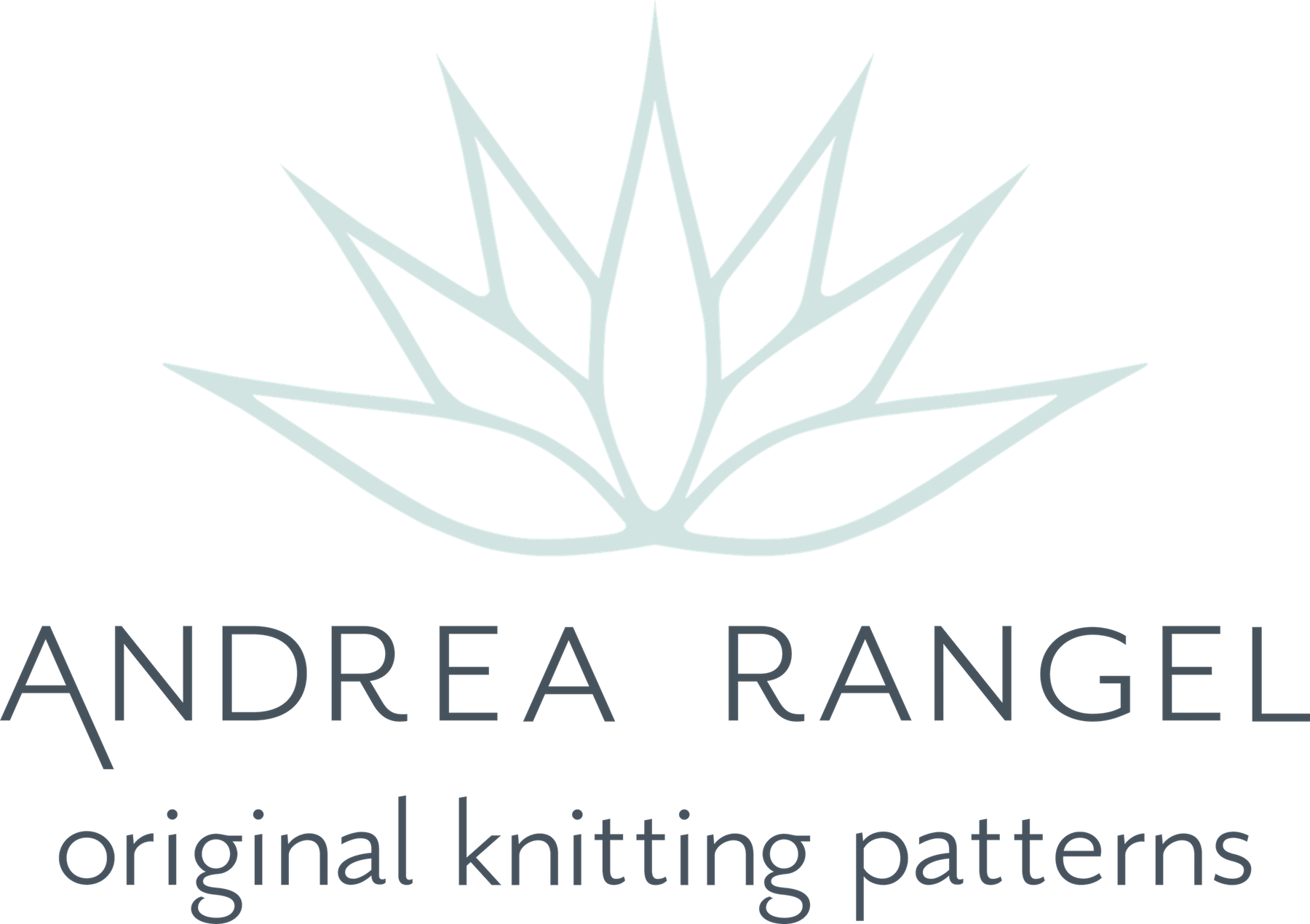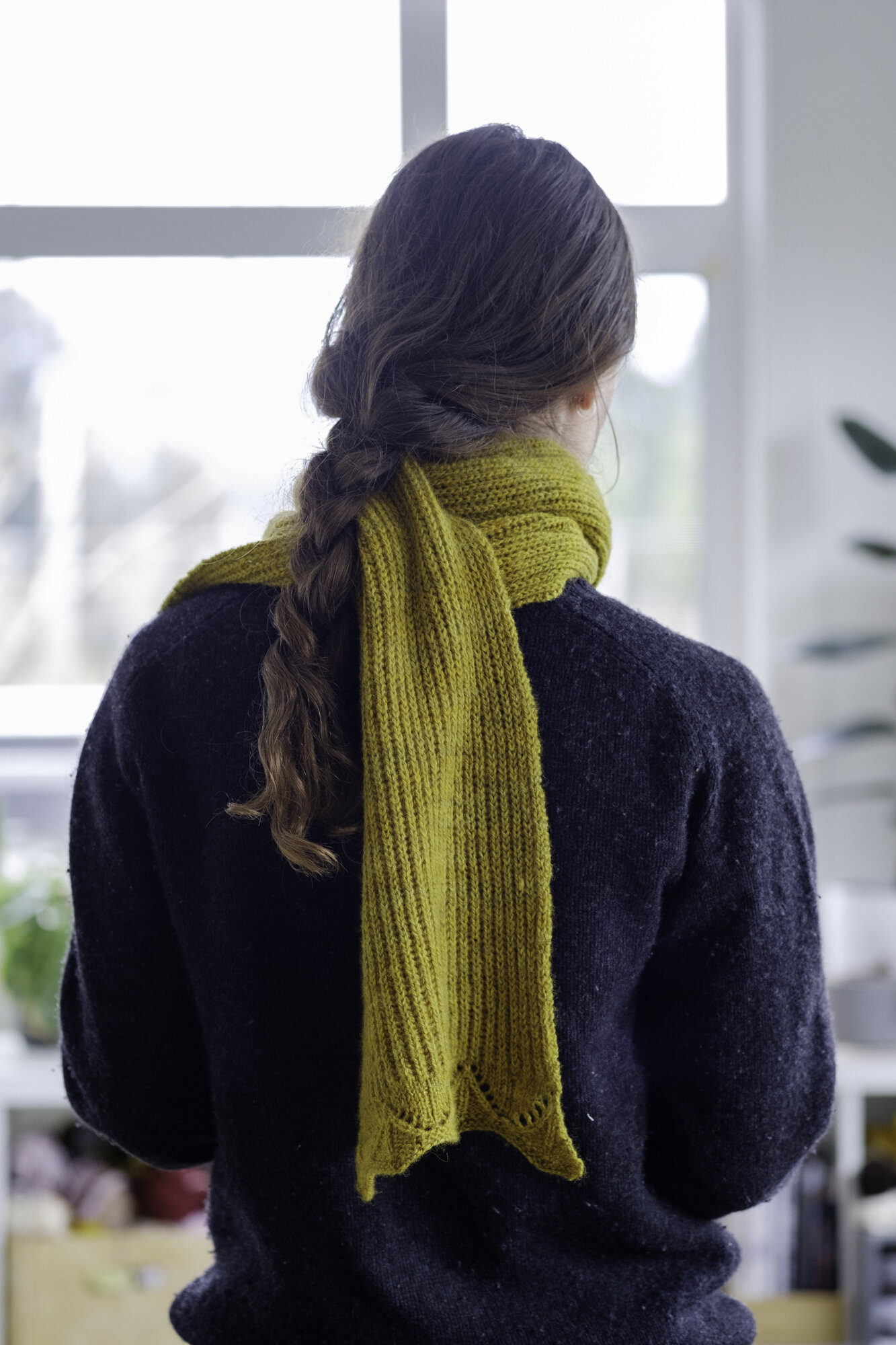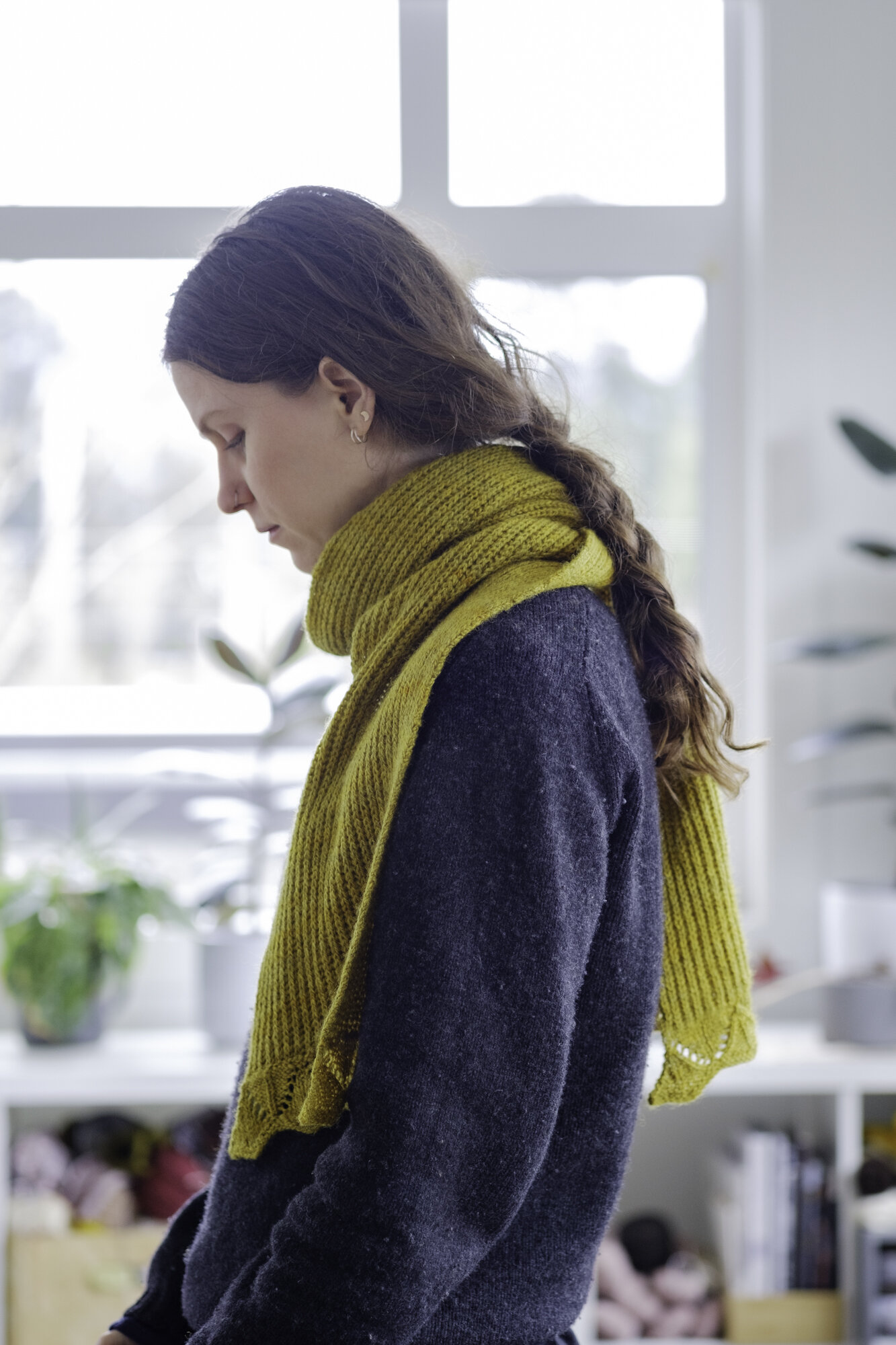A lightweight Rosa Scarf
I’ve been playing with my style lately, adding more pants and button down shirts, and I’ve even become more Canadian by getting a pair of Blundstones. I’m also feeling like I want more classic rectangular scarves in my wardrobe and I just so happened to have this gorgeous heathered fingering weight wool in the perfect shade of lichen yellow that I picked up while I was in Ucluelet last year. It’s Small Bird Workshop Tern Fingering, a BFL/Masham blend (yummy wool breeds!)
I thought it would be really fun to show you how to take my super bulky Rosa scarf to the other extreme — a fingering weight version! It’s definitely got a different vibe, but I’ve been wearing it constantly lately.
My super bulky Rosa shawl in Quince & Co. Puffin
The biggest immediate difference between these versions is that the lace edges are sweet, tiny little embellishments rather than a bold statement. Of course I had to work more stitches in the fingering weight in order to get a similar width, so the lace pattern is repeated a few times. Here’s how I did it.
How to Work Rosa in Fingering Weight Yarn
My fingering weight scarf is a bit narrower than the original - about 8 in/20.5 cm, as opposed to the original sample at 9.75 in/25 cm, but I think it suits the proportions. I cast on 69 instead of 41 using a US 3/3.25 mm needle to get a gauge of about 29 sts = 4 in/10 cm.
To work the lace panel, you’ll need to repeat the centre 14 stitches of the lace pattern three times. The hint is that there are 13 stitches before those centre 14 and 14 stitches after those centre 14. I suggest marking your chart to show the repeat so you know which ones to repeat while you’re knitting from the chart. It’s a bit trickier when knitting from the written instructions since you’ll have to go line-by-line to demarcate the centre 14 for yourself.
When you finish the lace pattern you should have 57 stitches. Then you can just work everything else as instructed. I didn’t end up using blocking wires for my fingering weight version. I just pinned out the lace points, and stretched out the scarf a bit, which neatened the edges. I’m gonna admit that while I was working I felt like my edges weren’t neat enough and it bugged me, but I’m really happy with how it blocked out. I also only had a few ends to weave in because as I worked I used spit splicing to join my new skein. It took me just under two skeins of Small Bird Workshops Tern, about 850 yards/777 metres.
TLDR:
With fingering weight yarn and about a US 3/3.25mm needle, CO69. Work three repeats of the centre 14 stitches of the lace panel. After finishing the lace section, you’ll have 57 stitches left. Work the rest of the pattern as directed.
Takes about 850 yd/777 m of fingering weight yarn.
If you want to adjust the width of your scarf, just add or subtract multiples of 14 to your original cast-on number so you can work more or fewer lace repeats.











